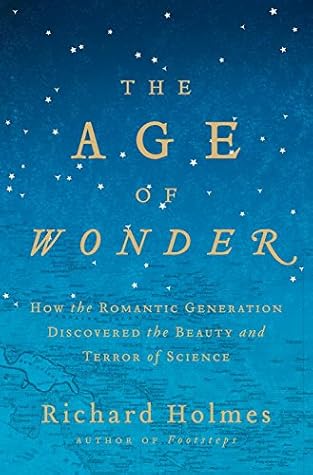More on this book
Community
Kindle Notes & Highlights
‘To what, then, may we not look forward … what may we not expect from the exertions of powerful minds … building on the acquired knowledge of past generations?’67
At the age of twenty-two, and in the shining wake of Joseph Banks, Charles Darwin had departed aboard HMS Beagle in December 1831.
Herschel’s expedition to the Cape came to represent for Darwin the important ideal of the independent working scientist, which inspired the rest of his life.
My question is, whether the time annihilated by learned bodies is balanced by the good they do?
Work exclusively for yourself and for science … Do not prematurely incur the honour or penalty of official dignities.’
The following year, on 25 August 1835, the New York Sun ran a huge splash scoop that Sir John Herschel had finally proved one of his father’s most daring astronomical speculations to be true. Herschel had discovered life on the moon! The
highly dramatic story held the front page of the newspaper for four days, doubled its circulation, and set off a frenzy of excitement from the east coast to the west.
Before the Great Moon Discovery story was blown, a mid-West preacher was collecting subscriptions to send a crate of Bibles to the poor benighted lunar men,
New Yorkists
he laid the huge, battered old tube out on the frosty grass, and held a last party inside it, with drinks and toasts and candlelight.82
‘Elegy for the Old Forty-Foot’:
The troubling image of a shy, reluctant, persecuted female Nature who is crudely questioned and even physically assaulted by an exclusively male Science now begins to appear. It slowly replaces the older Romantic image of a mysterious and seductive Nature,
The identification of Joseph Fraunhofer’s lines — similar to a supermarket barcode — was the first stage towards spectography, the
The implications of spectography are beautifully explored in the ‘Barcodes in the Stars’ chapter of Richard Dawkins’ Unweaving the Rainbow (1998), which ends with a long quotation from James Thomson’s poem ‘To the Memory of Sir Isaac Newton’
The spiritual upheavals this caused devout Victorian scientists were famously described by Edmund Gosse in Father and Son (1908).
‘Departments of the History and Philosophy of Science’.
Similarly, it seems to me impossible to understand fully the contemporary debates about the environment, or climate change, or genetic engineering, or alternative medicine, or extraterrestrial life, or the nature of consciousness, or even the existence of God, without knowing how these arose from the hopes and anxieties of the Romantic generation.
we need the three things that a scientific culture can sustain: the sense of individual wonder, the power of hope, and the vivid but questing belief in a future for the globe. And that is how this book might possibly end.
Caspar David Friedrich’s painting of 1825, The Sea of Ice, in which the explorer’s tiny, gallant ship is foundering amidst enormous polar ice-floes — but, hope against hope, may yet survive.
Kant’s analysis of the human concepts of ‘space, time and causation’ are particularly relevant to the problematic idea of scientific objectivity, and the way we all observe — but also subjectively imagine – the world around
He was executed by Robespierre for tax fraud: ‘The Revolution does not need chemists.’
established a world-famous botanical garden, widely imitated — for example by Banks at Kew.
He created the Romantic system of beliefs known broadly as Naturphilosophie (Nature Science, or Science Mysticism), in which nature is a single organism instinctively evolving or ‘waking’ towards the goal of higher self-consciousness. His
Everything in nature, from a lump of coal to a human being, aspires upwards to a higher, more spiritualised form, and will ultimately rise to the Zeitgeist (World Spirit).
with Caroline Herschel was elected one of the first two women Fellows of the Royal Astronomical Society, 1835.
She also tutored Byron’s daughter Ada Lovelace (1815-52) in mathematics.
The first women’s college in Oxford, Somerville – now co-educational — was named after her.
composed the famous children’s story ‘Goldilocks and the Three Bears’.
went on to produce a historic paper on the first chemical pile or battery,
He gave his name to the volt, a measure of the force of an electrical current.
Fragile youngest son of the pottery king and philanthropist Josiah Wedgwood,


